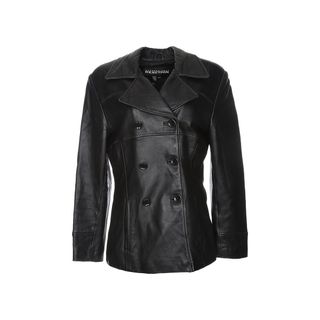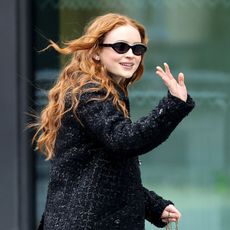My Top 6 Sustainable Highlights From This Fashion Month
Can fashion weeks ever be sustainable? That was a major question that has taken centre stage again this fashion month. The answer, in short, is definitely not. Not as influencers and editors fly from Copenhagen to New York to London, Milan, and Paris to take in the many highly produced shows. At the same time, it does feel like a wave of positive change is happening at long last. From seeing vintage bags in place of "cult" gifted bags through to designers using their platform at fashion week to make an environmental statement, maybe the major trend of sustainability is having some lasting impact—mostly because we have no choice.
I do believe in the power of trends to generate change. Of course, I don't want the topic of sustainability to be a fleeting chapter in fashion's various histories; I do feel like complex topics of industry change really do need to become popular to be heard, understood and improved upon.
As long as sustainability is in the open conversation, we can ensure that sustainable fashion is accessible and intersectional and aim to get the topic of sustainable fashion in the hands of governments who can make policy change.
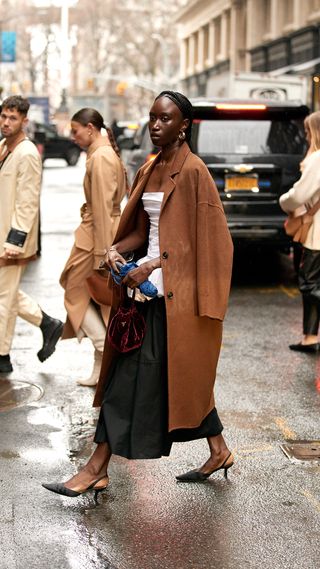
The truth is we don't really need new clothes, so why do fashion weeks still exist? As XR Boycott Fashion protested outside London Fashion Week, the question couldn't be ignored. And yet, I'm writing here because, like you, I love fashion. I love the feeling of wearing my favourite coat year after year or witnessing a vintage Alexander McQueen gown in the flesh. I love meeting young designers, with passion and ideas for what the future of fashion can look like. I love getting dressed and using fashion as an expression of myself. But as much as I love my favourite pearl hair slides and treasured vintage dresses, sometimes, the climate emergency gets me so down I just want to crawl in a hole.
The reconciliation between loving fashion and the climate emergency is why I feel it's important to highlight the positive changes happening right now in the industry and celebrate signals and actions of change. It's still really early stages across industry changes; we have a long way to go, but there have been many moments, from small right up to the top of the industry leaders, that shine a light on what positive change in the fashion world can look like. In order to ensure the change happens, I think it's important to celebrate these achievements, no matter their size, so we can continue on the journey to a more sustainable future that is inclusive and accessible. Keep scrolling for my sustainable fashion month highlights—from designers to leaders to street style.
1. Copenhagen Goes Sustainable
The sustainable fashion conversation definitely began small, thanks to the hard work of grassroots organisations and us, the consumers, demanding better. This fashion month, major leaders in the industry really stepped up to echo our voices and action response.
In Copenhagen, Cecilie Thorsmark, Copenhagen Fashion Week's CEO, started 2020 with the launch of an official Sustainability Action Plan with proper guidelines for brands and designers to stick to. She said, "We need to rethink and reinvent the role of fashion weeks. We’re already witnessing the devastating impacts of climate change, so anyone in the industry needs to transition and change the way business is done and do this urgently. Fashion weeks are no exception." This came alongside her bans of plastic water bottles and prioritising the use of electric cars to get to the shows.
2. London's Positive Fashion Space
In London, the British Fashion Council brought back the Positive Fashion Space to 180 the Strand. Once again, the space featured designers who are working toward a sustainable future in really diverse and wonderful ways. Though I feel like this could be better integrated with the whole of London Fashion Week, like the standards set in Copenhagen, designers like Phoebe English set the bar high among the main lineup, only using remnants of fabric from other designers.
It was amazing to see sustainable fashion pioneers like Livia Firth and Patrick Duffy taking up space alongside a pack of young designers and design graduates like Patrick McDowell, Emily Frances Barrett and Joao Maraschin, who are challenging the status quo in their work.
During this London Fashion, Amy Powney, the designer behind the sustainable luxury brand Mother of Pearl, launched the Fashion Our Future campaign. The campaign opened with a glittery evening hosted by British Vogue, with guests including fashion's favourite influencers and models like Adwoa Aboah and Camille Charrière.
I hope this campaign, and the influencers who rallied behind Powney to celebrate the launch, enables people to really think about the street style cycle they participate in too. What excites me about the social media-led campaign is that the website offers people a number of ways to pledge, highlighting that there are a number of ways to be more sustainable in our consumption habits.
3. Carcel's Debut Show
Danish brand Carcel opened Copenhagen Fashion Week and didn't show a single new piece of clothing. They used their fashion-week debut to make a statement, presenting new ideas instead of new clothes, and invited the audience to walk the runway in the clothes they were already wearing.
The brand's founder wrote on Carcel's blog after the show saying, "Fashion is able to revolutionise mindsets and spark desire. And when it’s best, it’s at the forefront of progress. That’s why we believe that we now need to say goodbye to what we used to promote on the catwalk. We need a cultural revolution in fashion, a new perception of what is beautiful and cool which is aligned with the world we want to live in. More than ever, we need to meet and use this platform to share new ideas and new visions for where we want to go next." Amazing.
4. The Street Style Shift
There was a minute there, about a year ago, when it felt like street style trends were just too much to keep up with. And then all of a sudden, the trend was to wear beige (which hasn't stopped).
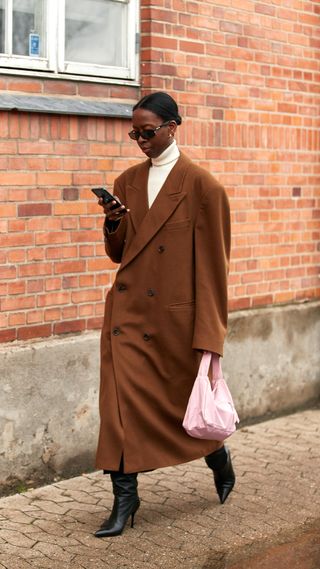
The movement toward non-trends has been refreshing, but more so, it feels like the street style set has come into their own personal style again a bit more. And as people tune back into that sense of personal style, rather than worrying about having the right cult bag/coat/shoes, we can really try and think about which trends suit us, and therefore buy less.

We've also spotted a lot more vintage pieces and sustainable designers among street style photos, like Blanca Míro wearing Marine Serre in Paris.
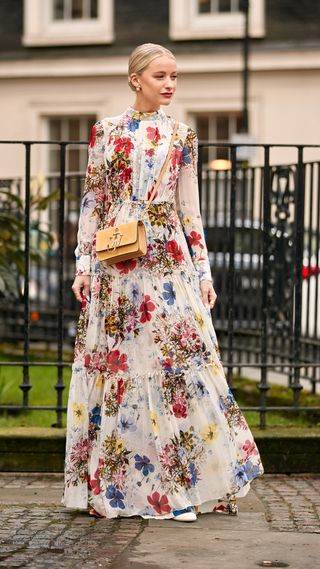
Even seeing influencers like Victoria aka In the Frow wearing rented pieces like this Erdem dress helps to challenge what people deem valuable. Seeing "old season" pieces back in the spotlight helps shift the obsession with new, new, new.
5. Small Designers in New York
Collina Strada is one of the designers making New York Fashion Week really exciting—alongside Eckhaus Latta and Christopher John Rogers—while also making sustainable fashion just really fun. Her collection this season included deadstock materials, upcycled tie-dye sweatshirts, rhinestone-encrusted water bottles, and fabric made from rose petals. The casting of her shows have always felt refreshingly real and cool too, which is incredibly important.
6. Editors Make The Change
I've loved seeing the initiative from editors—including our very own team Who What Wear UK—on digital platforms use their fashion week wardrobes to talk about change. From upcycled pieces to vintage to even a team full of editors who are trialling renting, there is a lot of power in the people who write the narratives of fashion taking charge.

Our Shopping Editor Joy Montgomery is a 1970s style queen and often goes straight to the source via Rokit Vintage for the very best of '70s style.
Shop similar:
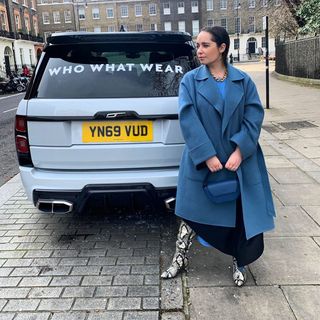
Our very own Elinor Block brilliantly mastered a monochrome blue look with a mix of pre-loved, vintage, and "old season" pieces.

Vintage queen and fashion writer at Elle UK Daisy Murray actively uses her captions to discuss transparency, vintage, and sustainable options. In Copenhagen, she shopped her own wardrobe and rediscovered this vintage suit.
Shop similar:
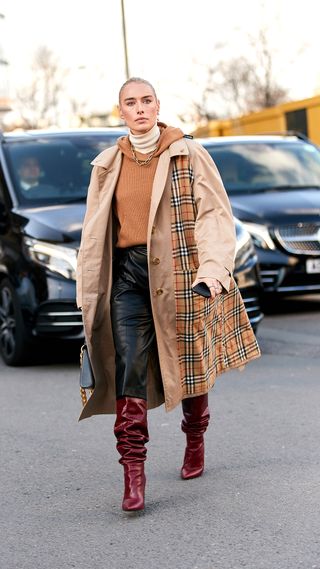
Financial Times Junior Fashion Editor Flora Macdonald Johnston wore an upcycled Burberry trench coat by 1/Off at London Fashion Week, proving that pre-loved pieces are incredibly chic.
Marine Serre Sees the Future
Marine Serre has pioneered upcycling for a few seasons now, and she stays ahead of us all by fashioning a future that is politically charged and optimistic, as well as honestly beautiful. Her intergenerational casting places the responsibility on us all to think about the future of our planet, while she also just offers an entirely new way of looking at future fashion.
These highlights are, of course, just that: highlights. We need to continue to talk about sustainable fashion at fashion weeks so that the future of sustainability is accessible to everyone and inclusive of everyone; the industry needs to continue to include sustainable fashion voices that have pioneered the movement. These moments would not have happened five years ago and they've made me optimistic about a more transparent future for fashion weeks. We can use these platforms to create change, create new ideas, and show the world what fashion really can be.
Next: I Mostly Shop Secondhand—Here Are the Best Pieces From Etsy, Vestiaire, and eBay
-
 Reformation Finally Launched Swimwear, and the Collection Is Pure Elegance
Reformation Finally Launched Swimwear, and the Collection Is Pure Elegance*Orders every suit.*
By Eliza Huber
-
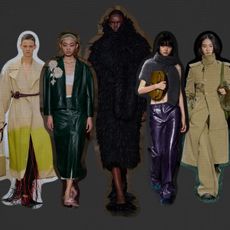 London Is Calling—6 Trends You'll Want to Pick Up On Before Next Fall
London Is Calling—6 Trends You'll Want to Pick Up On Before Next FallRing, ring.
By Jasmine Fox-Suliaman
-
 Alexa Chung Wore a Sheer Dress With This $38 Basic During London Fashion Week
Alexa Chung Wore a Sheer Dress With This $38 Basic During London Fashion WeekShe really never disappoints.
By Eliza Huber
-
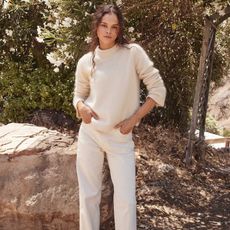 16 Classic Finds That Are Key to Building Your Perfect Capsule Wardrobe
16 Classic Finds That Are Key to Building Your Perfect Capsule WardrobeThis brand is a gem.
By Raina Mendonça
-
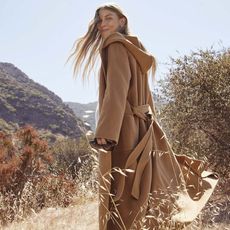 16 Classic Winter Fashion Finds That Will Stand the Test of Time
16 Classic Winter Fashion Finds That Will Stand the Test of TimeThese are winners.
By Raina Mendonça
-
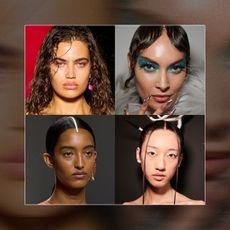 From Milan to Paris, 9 Next-Level Beauty Trends That Dominated Fashion Month
From Milan to Paris, 9 Next-Level Beauty Trends That Dominated Fashion MonthThey're also extremely wearable.
By Shawna Hudson
-
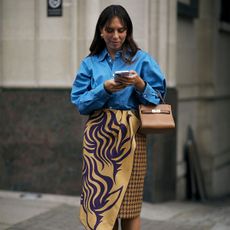 I Just Got Back From London—Here's Where I Stayed, What I Ate, and What I Wore
I Just Got Back From London—Here's Where I Stayed, What I Ate, and What I WoreFeaturing the most memorable moments only.
By Lauren Eggertsen
-
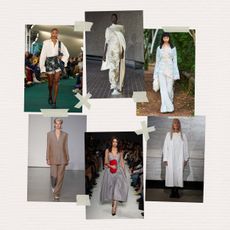 Prediction: These 8 Trends From London Fashion Week Will Define 2024
Prediction: These 8 Trends From London Fashion Week Will Define 2024Coming from across the pond.
By Jasmine Fox-Suliaman

